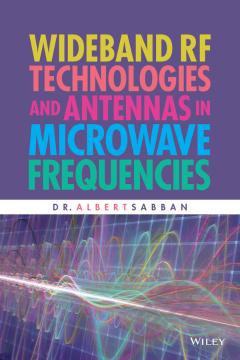Microwave Engineering —— Land & Space Radiocommunications
----- 无线通信:从微波到自由空间
Foreword. Preface. Acknowledgments. 1. Electromagnetic Wave Propagation. 1.1. Properties of Plane Electromagnetic Wave. 1.2. Radiant Continuous Aperture. 1.3. General Characteristics of Antennas. 1.4. Free-Space Loss and Electromagnetic Field Strength. 1.5. Reflector and Passive Repeater. 1.6. Model of Propagation. 1.7. Reflection and Refraction. 1.8. Influence of Atmosphere. 1.9. Propagation by Diffraction. 1.10. Attenuation by Atmospheric Gases. 1.11. Attenuation and Depolarization by Hydrometeors. 1.12. Influence of Ionosphere. 1.13. Thermal Radiation. 1.14. Probability Distributions. 2. Principles of Digital Communication Systems. 2.1. Signal Processing. 2.2. Thermal Noise. 2.3. Digital Communication Systems Design. 3. Microwave Line-of-Sight Systems. 3.1. Engineering of Line-of-Sight Systems. 3.2. Design of Line-of-Sight Microwave Radio Link: Interferometric Method. 3.3. Link Budget. 3.4. Methods of Prediction. 3.5. Protection against Jamming. 3.6. Frequency Reuse Techniques. 3.7. Comparison between Various Diversity Techniques. 3.8. Availability of Microwave Line-of-Sight Systems. 4. Microwave Transhorizon Systems. 4.1. Engineering of Transhorizon Systems. 4.2. Method of Prediction. 4.3. Link Budget. 4.4. Examples of Transhorizon Links. 4.5. Other Models of Prediction. 4.6. Total Availability of Troposcatter Links. 5. Satellite Communications. 5.1. Space Geometry of Satellite Systems. 5.2. Configuration of Satellite Communication System. 5.3. Link Budget. 5.4. Method of Prediction. References. Index.
{{comment.content}}








 京公网安备 11010802027623号
京公网安备 11010802027623号